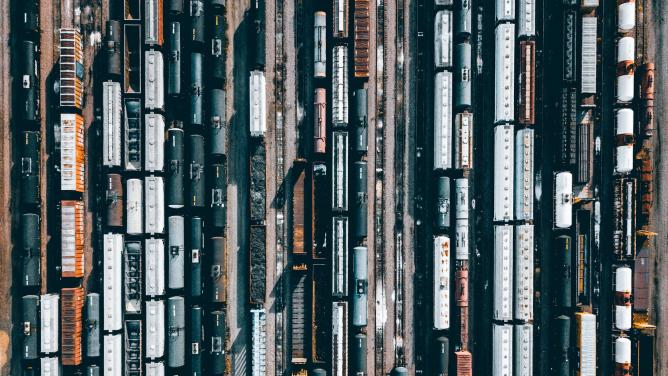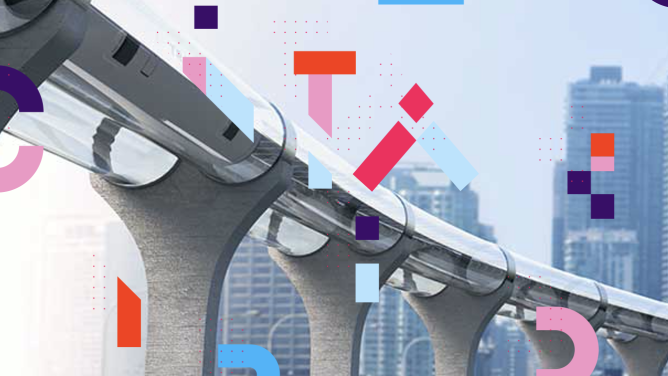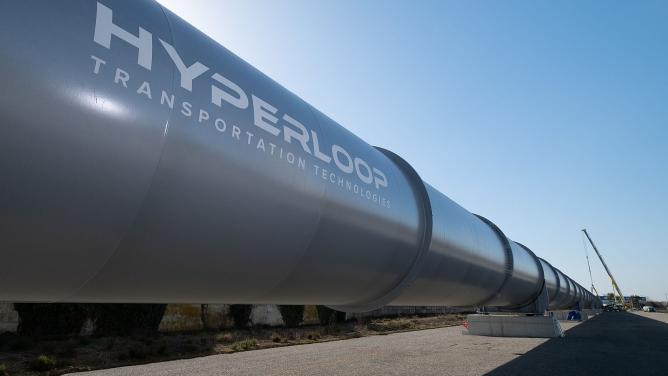Read also:
“The infrastructure must be sustainable and benefit the energy transition”
Our interview with Sébastien Gendron, co-founder and CEO of Transpod
With Hyperloop, Elon Musk has not created new technologies, but instead, has provided the term that was missing from a pre-existing concept of tube transportation. Though most of the projects developed are characteristically different from the Hyperloop Alpha defined on paper by Elon Musk and his teams, most of them are still developing under the name Hyperloop.
The idea of placing a vehicle in a tube with low air pressure, twinned with the principles of linear motors, magnetic levitation and air cushioning all appeared between the eighteenth and the nineteenth century. In the second half of the twentieth century, rapid guided transport using air cushion vehicles became a reality, first with the Aérotrain Bertin, then with magnetic levitation, associated with linear motors. Developed over some fifteen years, the SwissMétro system combined magnetic levitation, a linear motor and circulation in a tube containing a rarefied atmosphere. In a sense, SwissMetro was a forerunner of the Hyperloop. The above-mentioned unconventional systems were both penalized by their incompatibility with the infrastructures in place. It was impossible for them to adapt to town centers by using train lines and stations. However, high-speed trains, though less rapid than these unconventional systems, presented the advantage of accessing urban centers without an increase in price which could negatively impact the viability of the said project.
Elon Musk sources Hyperloop Alpha to all those willing to develop it
With his “Hyperloop Alpha” white paper of around fifty pages, distributed in 2013, Elon Musk, assisted by teams from Tesla and SpaceX, presented the Hyperloop Alpha. The entrepreneur has open-sourced the concept, deciding not to develop it himself. However, he has fostered initiatives among companies vying for the creation of Hyperloop systems thanks to the Hyperloop Pod Competition. This took place every year from 2015 to 2019. In doing so, Elon Musk placed himself as the facilitator of the Hyperloop community.
Hyperloop Alpha is presented by its creator as an economic alternative to high-speed rail travel and features a route running from the Los Angeles region to the San Francisco Bay Area. This concept includes low-pressure tubes and linear motors equipping only 1% of these tubes (one tube is used per direction). The motors ensure acceleration and deceleration. As some air is present inside the tube, the vehicle or “capsule” fronts are equipped with a compressor fan that channels the air in front of the vehicle downwards, to create an air cushion. This system also enables Hyperloop speed to go past the Kantrowitz limit due to the compression that prevents air from building up in front of the capsule.
The Hyperloop Alpha concept leaves very many questions hanging, on a purely technical level as well as where safety is concerned. Yet the staggering costs of establishing this enterprise are paradoxically precise.
Who will be the first to turn Hyperloop into a concrete proposal?
Over the years, Hyperloop has become quite a common theme among academics. The series of questions raised by this transport system constitutes a vast field of research. Carnegie Mellon University, Loyola Marymount University, The University of Munich (Warr Hyperloop) and the University of Washington have all launched Hyperloop schemes.
Simultaneously, companies have been created to turn Hyperloop into a reality. They have all made specific technical choices and therefore frown upon the interoperability of Hyperloop systems. Besides their technical options, these companies stand out due to the level of their funding. The six main players in the sector have raised about 450M€, including 340M€, for the Virgin Hyperloop (Ex-Hyperloop One) alone. This funding comes from the private sector. Public contribution is still marginal, yet this may be the very key to getting Hyperloop up and running, as the level of investment and risks associated with such a novel system are so high.
At the end of 2020, Virgin Hyperloop comforted its advance by being the first player on the market to transport people in its experimental tube whilst its competitors were merely testing model versions. Though not yet transporting passengers, Transpod, Hyperloop TT, Hardt, Nevomo, and Zeleros have all provided a plethora of synthesized images presenting their vehicles and infrastructures. The competition between these companies is also taking place in the field of communication. They must foster and maintain trust even when projects tend to become delayed. Through declarations of intent, several dozen Hyperloop lines have been mapped out through the world, yet they still need the validation of technology and investment that matches their ambitions.
What is hindering the development of Hyperloop ?
To date, not one demonstrator has reached the speed expected by Hyperloop on a real-life scale – approximately 1000km/h. Such a speed means that Hyperloop lines need curves with an exceptionally large radius. If this is not ensured, this mode of transport would become an extraordinary “roller-coaster of sensations”. In reality, however, it should be accessible to the same public as air and rail travel.
However Hyperloops can run on decarbonized energy sources, yet their energy consumption remains high. This is partly explained by the necessary creation and maintenance of a “partial vacuum” within the tubes.
To enable a very high-speed capsule to advance within a tube is not an insurmountable feat, but doing so while ensuring passenger safety, even in the most improbable of cases, leads to a significant raising in costs. What is also missing is a regulatory framework for Hyperloop, especially in Europe where all modes of transport are submitted to precise legislation.
As for issues of interoperability, they could be solved if we consider that the first company managing to rise to the Hyperloop challenge shall conquer the whole of the market. It could take the competition on board to build the lines rival companies pledged to construct.
The Hyperloop players must now show that they are capable of going further than SwissMetro. Launched in 1992, the SwissMetro project came to an end in 2009 when the board of administration of SwissMetro SA concluded that this project “was not feasible in keeping with the agreed deadline”.
Today, chiefly thanks to Elon Musk, the Hyperloop “brand” has been popularized all over the world. What was for years but an extravagant flight of fancy, good for illustrating the covers of science-fiction novels, is now being translated into concrete projects. Pretty much everywhere, in the USA, Europe, and Asia, prototypes of Hyperloop capsules have demonstrated the technical feasibility of the project. There is still a huge gap to bridge if a commercial Hyperloop is to see the day over the next few years, … many obstacles still remain.


